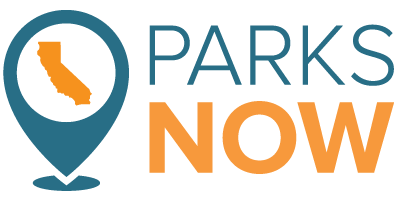MILLENNIAL PERSPECTIVE: HOW WE CAN GET MILLENNIALS MORE INTERESTED IN PARKS AND PARK ISSUES
by Bradley Cumming
The California State Parks system is in the midst of a major transition. The Transformation Team charged with managing this pivot is helping the system face a new century and address the challenges and opportunities that come with it. With demographics shifting in California and the country, parks need to adapt to a younger, more diverse population.
Our mission in working with Parks Now, a state-wide coalition of park advocates, is to find out how to get the growing and diverse population of millennials interested in visiting, supporting, and conserving parks.
We had a lot of questions that we needed to answer in order to address these issues: Do millennials visit parks? What do millennials like to do at parks? Do they care about the creation and maintenance of parks in their community and in lower income areas? How does ethnicity affect the preferences of millennials?
To get these answers and learn more about the preferences of millennials our team crafted a survey for circulation to a number of colleges/universities and high schools around the Los Angeles area.
Because millennials are a diverse population, we made sure we had responses from different racial and ethnic groups. Thanks to that, we gained some very interesting insights into the differences between how groups use parks.
For example, Asian, Latino and those who marked themselves as other preferred open grassy fields (for soccer, frisbee, etc), while white respondents preferred hiking areas. African-American respondents preferred blacktops (for basketball and four square). Latinos also indicated a preference for picnic areas more than the other groups did.
Despite these differences, all respondents viewed parks as positively contributing to the sense of community in an area as well as providing a needed space for outdoor activities.
The survey also revealed that the majority (63%) of respondents visit parks between one and three times a month. This made us question what was stopping millennials from using parks and green spaces more regularly.
We found an answer by looking at what the respondents said would encourage them to go to parks more often. In general, the respondents believe that parks need to be safer and cleaner and have more organized events like fairs and festivals.
But we also wanted to understand millennials political behavior and how that intersects with parks issues and we used the survey to accomplish that.
Our survey results showed us that while almost everyone was in favor of creating more parks as well as maintaining existing parks, only four percent of people responded that bond measures (the most important means of funding state and local parks) motivated them to vote on Election Day.
This information has given us an in-depth view of how millennials in the Los Angeles area view their parks and green spaces. We have concluded that while millennials see the positives of parks as well as their flaws, they are not properly educated on or enthusiastic about the ways they can make a difference in improving parks.
We hope that this research can be used to improve our state's parks and bring them into the 21st Century. Our natural resources are critical and we need to ensure their preservation by building a connection between them and the new California.

